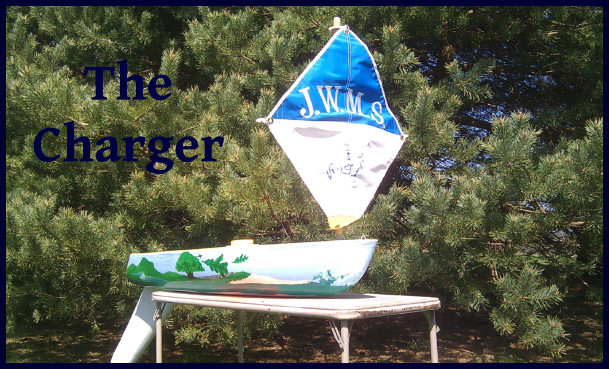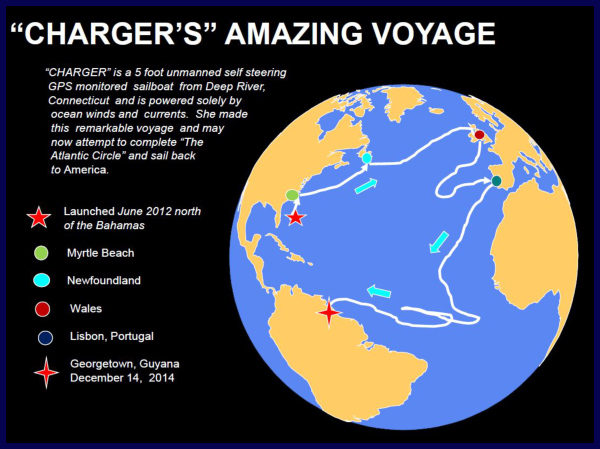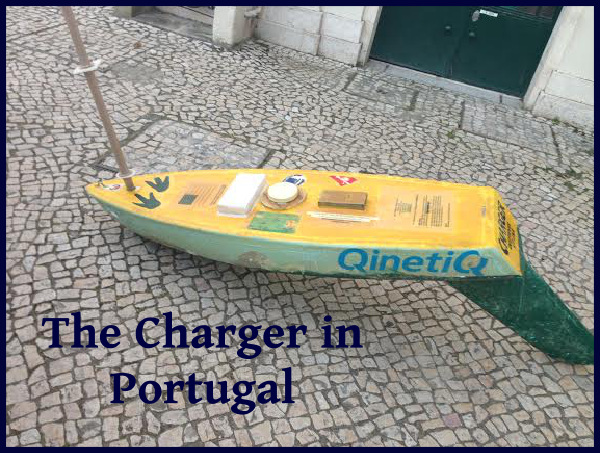The Blue View - A Missed Opportunity
/Just a day before we were scheduled to leave Guyana, we received an email from a friend telling us of the plight of the sailing vessel Charger. Charger is a tiny, unmanned boat that had been damaged on its voyage across the Atlantic, and was found adrift off the coast of Guyana by a local fisherman. Before long, we had several e-mails from other friends who had read of Charger's plight on Noonsite and knew we were in the vicinity.

Charger is owned by the students at the John Winthrop Middle School in southern Connecticut. The 5-foot, 45-pound, self-righting sailboat was launched north of the Bahamas in June 2012 to chart Atlantic currents as part of the NOAA “Drifter” program that is helping students and scientists map the oceans' currents. Charger is not only self-righting, but self-steering and self-tending as well. She has solar panels, a battery and a GPS transmitter that sends out its position every two hours. Pretty clever.

Over the next 2-1/2 years, she sailed more than 16,000 miles. (That's about the same distance we sail during a similar period of time). She was blown ashore, undamaged, on Myrtle Beach, SC. She was relaunched and next went ashore off northeastern Newfoundland. She was banged up a bit, but was repaired by the St. Johns School of Ocean Technology Marine Institute and relaunched. Her erratic, Atlantic journey continued, going ashore in Wales, then Portugal and finally ending up off the coast of Guyana in December, 2014. She's now living with the fisherman's family, awaiting either repairs or transport home. Her passages sound quite similar to ours – sail about 6,000 nm per year, stopping in exotic ports here and there for repairs, some inland travel and visiting with the locals.

After some investigation, the fisherman that found Charger was located. The battery and GPS unit were dead, making repairs difficult, and the plan was to try and find a way to transport her home. Andy Colloton of Shipwright Technical Services in Connecticut has been assisting the school in its efforts to get Charger back. He's been getting the word out to the seafaring community and is coordinating the effort to get her home. Lots of people have offered help. The U.S. Coast Guard offered to deliver it back to Connecticut if someone could get it as far as one of their Caribbean stations. Other yachties and even a pilot offered to help get the vessel from Trinidad to Puerto Rico. All that was needed was to find a way to get her from Guyana to Trinidad.
Since we were in Guyana, only 40 or so miles from Georgetown where Charger was currently residing, and were heading to Trinidad, we were obviously in a position to help out. It wouldn't be difficult to lash Charger down on our aft deck and bring her along on the passage. The only issue was the timing – we had already booked a flight out of Trinidad and the time was getting short.
We contacted Andy and the school teacher in charge of the project, and got very enthusiastic responses in reply. They fired off an email to the fisherman and we waited for his response on how best to get Charger to Nine of Cups. When there was no reply, they sent another email and we waited. And waited some more. Either the fisherman wasn't checking his email or was out fishing. We delayed our departure another three days, and when there still wasn't any response, we reluctantly checked out of Guyana and headed for Trinidad without Charger. Too bad – Charger would have been well on her way to completing the Atlantic circle following the route of the early explorers, and we would have had a couple of great blogs.
If you know anyone in Guyana or heading to Guyana by boat that could help, contact Andy and perhaps they'll be able to help transport Charger back home for repairs. She is surely getting homesick for her old friends and family.

